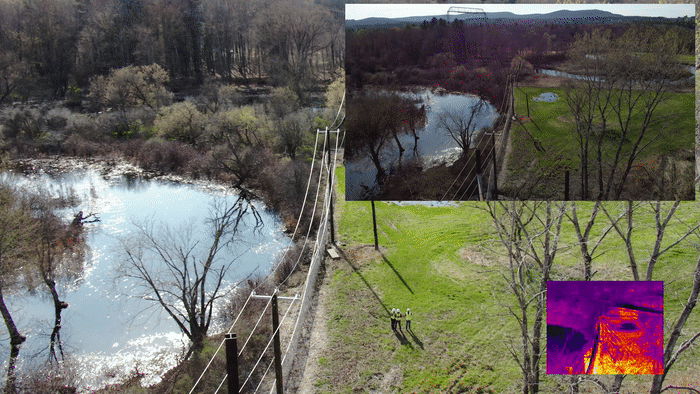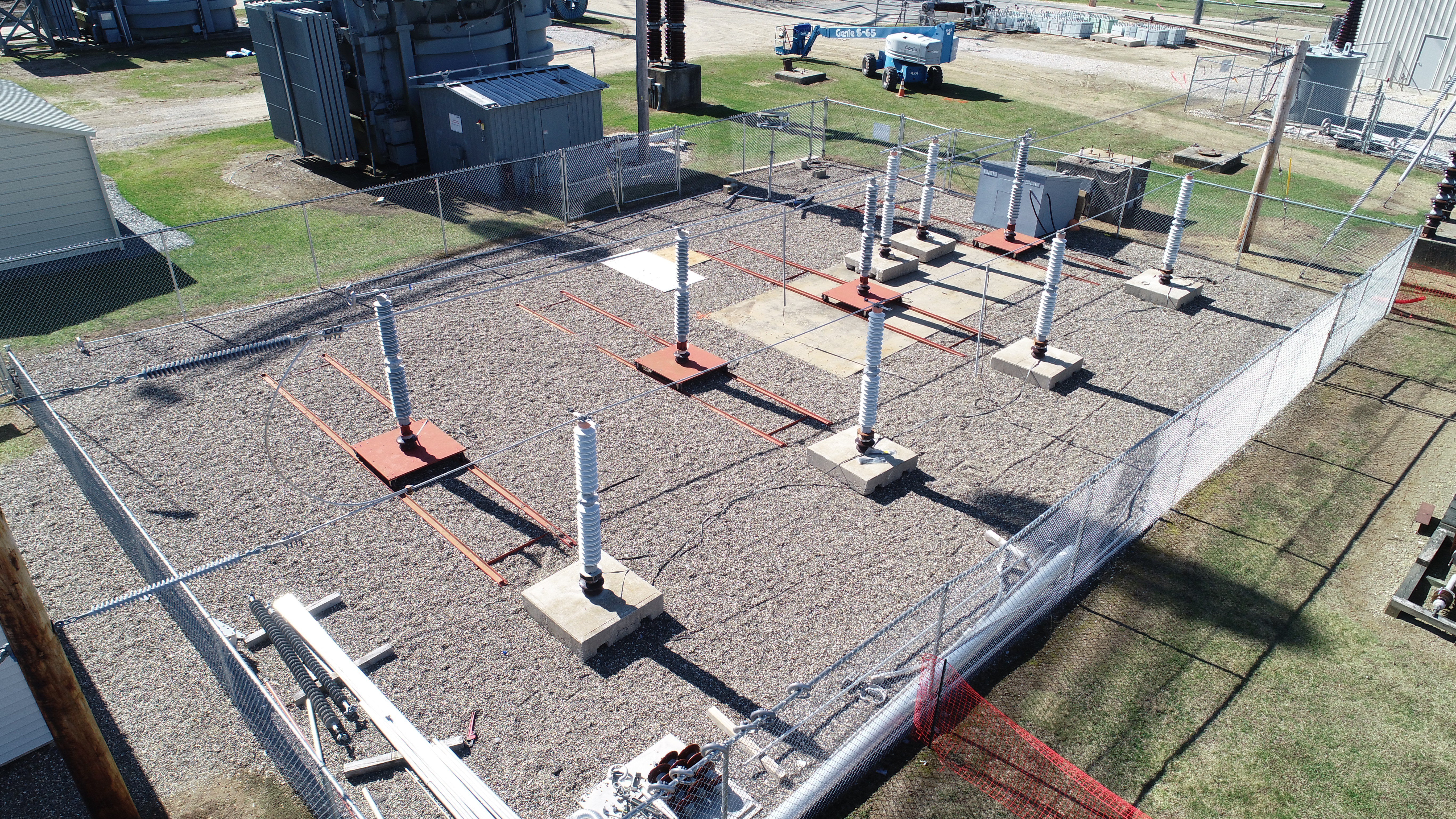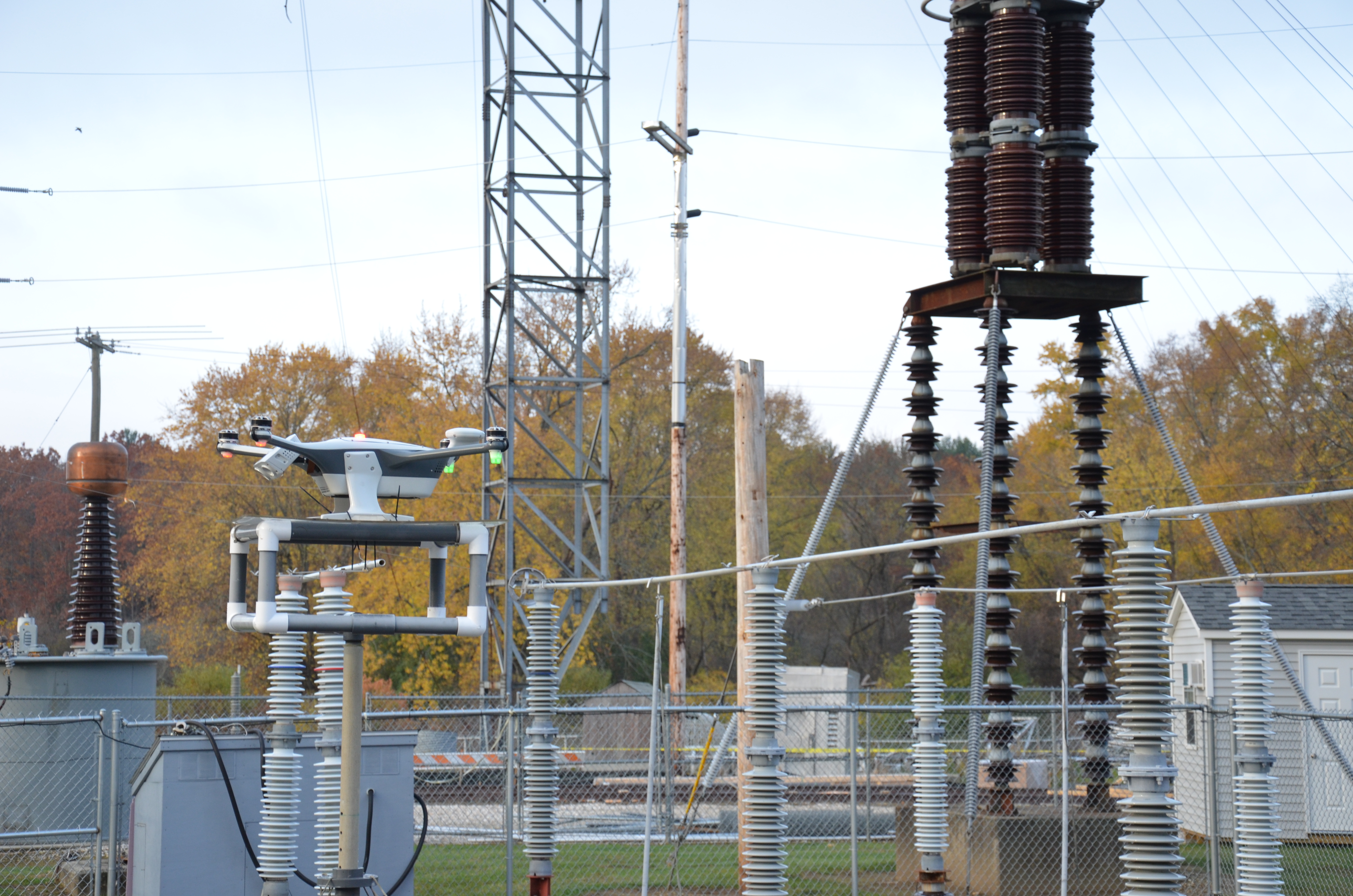The Future of Automated Distribution Inspection
How close are we to automated inspection?
Automated aerial inspections of distribution lines has been an aspiration for many engineers, inspectors, and storm damage assessors for many years. When drones first began to be a viable option for T&D operations, many utility engineers were quick to say “Wouldn’t it be nice if a drone could live in a substation and then automatically fly when we needed it to?” That technology is moving closer to reality.
Drone technology moves quickly, and we are approaching a step change in capabilities. Lab evaluations are key to implementing at the speed of innovation.
– Drew McGuire, R&D Director, EPRI
Drone systems have made major advances in the last 18 months, leaving engineers eager but apprehensive to deploy the technology. While the promise is great, the technology has not been proven to be effective, and there are many technical questions that hinder deployment.
EPRI research is aimed to test this technology and reduce uncertainty and risk in deploying the technology in the field. Using EPRI labs, researchers are able to evaluate technology quickly, safely, and at low cost. These labs give engineers the ability to explore questions about technical performance and effectiveness.

Drone Docks – Emerging but Unproven
Automated drones with docks, chargers, and communication systems hold great potential to provide T&D asset owners with visual inspection, on-demand video, and flexible routine operations. The potential for the technology is large, but there are many technical unknowns regarding performance. Questions remain of all-weather performance, reliability, inspection quality, inspection area, and operations in electrical environments. The best way to answer these questions is robust testing and evaluation.

The Research Approach
The research projects explore commercial or pre-commercial products that are targeted at T&D applications. The approach is designed to identify technologies and understand how they actually perform in T&D environments. Researchers follow this general process:
- Develop functional specifications – What are the performance criteria that a drone system should meet to be successful?
- Technology scouting – What technologies are available, and how do their claimed specifications match the functional specs?
- Develop test plan – How should we test those technologies in the lab to evaluate real-world performance?
- Execute long-term testing – Use lab facilities to evaluate technologies in multiple environments, across multiple seasons and operating conditions
Throughout the research, the project team will be exposed to new technology, lab experience, and field experiences with this emerging technology.
The Labs
EPRI labs give the unique ability to stress-test equipment quickly against custom testing protocols, giving results that are reliable, science-based, and directly relevant to utility engineers. This research uses three key lab facilities in EPRI’s High Voltage Laboratory:
138kV research substation: This substation gives us the capability to test navigation, repeatability, and ability to inspect real substation environments.
23kV test line: This 1km three-phase line loops around the lab and gives the ability to test wider-scale aerial inspections
UAV test yard: This purpose-built test site investigates how robotic and aerial technologies operate in electrical environments, including electric fields, magnetic fields, and arcing conditions.
Progress and Participation
This research is underway now with ongoing project meetings and updates. If you would like more information or to understand how to get involved, contact Dexter Lewis at dlewis@epri.com.

